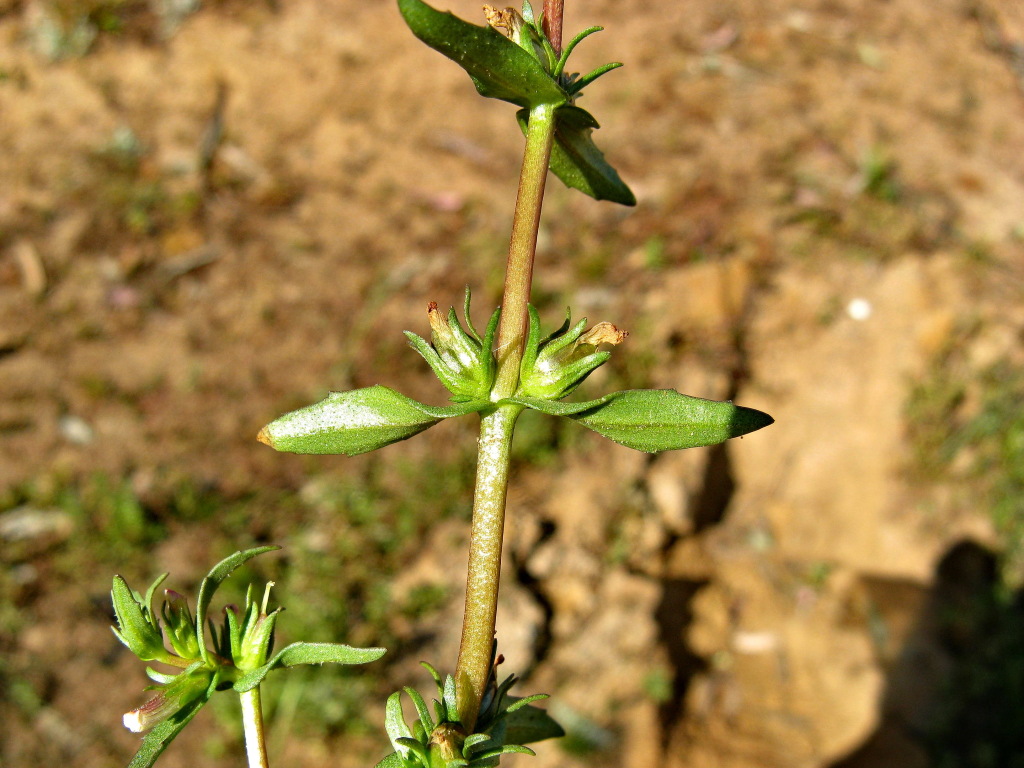Gratiola pumilo
F.Muell.Erect, rarely decumbent perennial herb 4–18 cm high, sessile glands obscure, otherwise glabrous or on all parts but the corolla with scattered, minute to coarse hairs, some possibly eglandular; branches erect to shortly prostrate and possibly rooting near base. Leaves narrow-ovate to -elliptic, 0.5–2.5 cm long, 3–7 mm wide, base cuneate to stem-clasping, margins toothed to entire. Flowers single in bract axils, sometimes only 1 at a node; pedicels 0.5–7(–9) mm long; bracteoles 1.5–4.5 mm long. Sepals unequal, 2–5.5 mm long; corolla to 7–9 mm long, white, sparsely hairy; staminodes 2. Capsule broad-ovoid, 2.7–6 mm long; style 1.3–2 mm long. Flowers summer.
LoM, MuM, Wim, GleP, VVP, VRiv, MSB, RobP, MuF, GipP, OtP, WaP, Gold, CVU, GGr, DunT, NIS, EGL, EGU, HSF, HNF, Strz. Also SA, NSW, ACT, Tas. Mainly confined in Victoria to the north and west of the State, on damp and drying mud beside lakes and watercourses and seasonally inundated depressions, but also with a few isolated records to the south and east (e.g. Pomborneit near Camperdown, shores of Lake Eildon, upper Snowy River).
Barker, W.R. (1999). Scrophulariaceae. In: Walsh, N.G.; Entwisle, T.J., Flora of Victoria Vol. 4, Cornaceae to Asteraceae, pp. 483–528. Inkata Press, Melbourne.
 Spinning
Spinning

